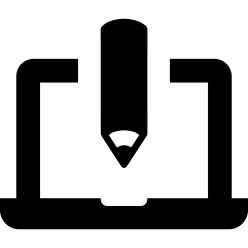The three sites I looked at for this assignment are: Digital Tattoo, Dr. McClurken, and Caitlin Murphy. The following are lessons about digital identity that I have learned from these pages, hopefully in some semblance of order.
1. Until this class, I’d never considered a digital identity beyond the scope of social media like Facebook, Twitter, and Tumblr. So for most of my digital life, I have always thought of a digital identity as something intimately and exclusively connected to my social life–an “informal” life, if you will. After attending some Domain of One’s Own workshops and looking at Dr. McClurken’s and Caitlin Murphy’s pages, it dawned on me that you can also have a professional digital identity, something on the web for employers to discover besides your Facebook profile (or, God forbid, your MySpace page). I have always tried to be judicious and thoughtful about what I post on social media, in order to control that aspect of my digital identity, but it never even occurred to me that I could construct the professional side of my digital identity–something that I would want potential employers to find.
2. On the topic of being selective about what I (and others) contribute to my social digital identity, the amount of stupid and/or illegal things that people publish on their own digital profiles never ceases to amaze me. While browsing Digital Tattoo, I came across an article about a ridiculously stupid trend called “Neknomination.” Basically someone drinks an obscene amount of alcohol, posts a video of it on YouTube and other social media, and challenges someone else to do the same thing on an even more dangerous and ludicrous level. The viral nature of this trend is enhanced by people’s desire to get “likes” and to become virtually famous. I guess the lesson here (that I am fortunately already aware of, but this article truly underscores) is to not put immature, dangerous and/or illegal material online that could tarnish your digital identity.
3. Additionally, just as your real-world identity does not solely consist of you, neither does your digital identity. It also consists of the people, organizations, institutions, etc. with whom you engage online. The Neknomination fad is strongly connected to digital peers, according to Digital Tattoo: “Students may feel pressure from their friends and cohorts to participate, as those who do not accept the challenge or who do not outperform their nominator, risk losing face among their peers.” Even if you don’t rise to the challenge, per se, a tag, like, or comment on a Neknomination video/post goes onto your digital record. Just as you should be careful in choosing your real-life friends and associates, you should also carefully construct the friends and other entities that are connected to your digital identity.
4. Another interesting lesson I learned from Digital Tattoo was the extent of my, or anyone else’s, digital identity, or what they call a “digital dossier.” DT’s page and video about digital dossiers points out that your digital identity is created before you even get online, which I think is especially true today, and it lives on after your death. I see countless mothers, young and old, posting pictures of their children on Facebook and other social media, creating a digital identity for their children before the kids even know what a computer or the internet is. The purchases you make online, medical and other records filed on you (behind hopefully secure barriers), any websites you may use, all contribute to your digital identity. Even after death, online obituaries, condolences, and memorials further add to your digital identity. Until visiting this page on DT, I had never realized just how much makes up someone’s digital identity, and how it is partially out of your control (what happens before and after your internet life).
5. The above point being said, Dr. McClurken’s and Caitlin Murphy’s profiles highlight the amount of control that you do have in constructing and enhancing your digital identity, and just how much better the web may be for a resume/portfolio (depending on the person, of course). For example, Caitlin’s digital resume is perfect for her interests in photography and video: she can easily display her work for friends, employers, and anyone else who may stumble upon her site. Additionally, even though photography and video may seem like hobbies to some, Caitlin’s site allows her to present her interests in a professional manner. Dr. McClurken’s site conveniently keeps all of his professional experiences in one place–something that would probably be an absolute pain and an environmental threat to the trees if it had to be examined in physical paper form. Looking at these two sites, and also considering my ever-increasing involvement in the digital world (professional and social), I am quickly realizing the advantage of having a digital resume as part of my digital identity. I honestly hate including web addresses on my CV (they take up space and probably divert attention), so it seems like a digital resume will be the perfect solution for me! I will, of course, keep my regular CV as well.
